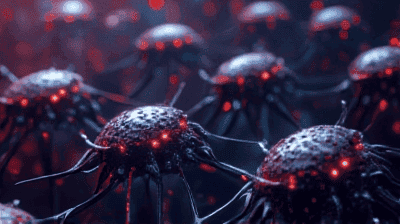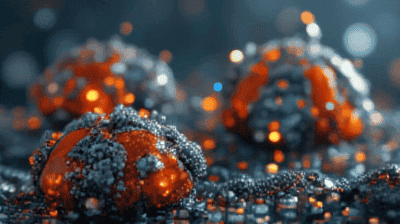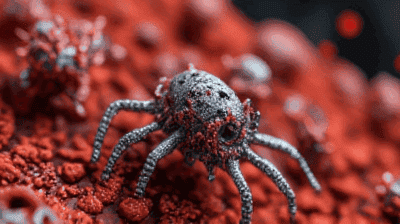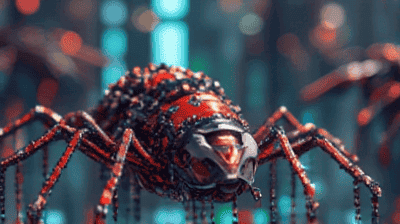
Swarm robotics is an exciting and rapidly developing field that explores how groups of simple robots can work together to perform complex tasks, much like the intricacies of insect colonies. Inspired by social insects such as ants, bees, and termites, swarm robotics utilizes principles of collective behavior to design systems where numerous robots operate in parallel, sharing information and resources effectively.
The Concept of Swarm Robotics
Swarm robotics draws inspiration from biological systems where individual entities work together to accomplish tasks that would be difficult or impossible for single agents. In nature, swarm behavior can be seen among various species, including:
Ants: Ant colonies exhibit complex behaviors such as foraging, nest building, and path finding. Individual ants follow simple rules based on local interactions with their environment and each other, leading to the emergence of sophisticated collective behavior.
Bees: Honey bees demonstrate remarkable coordination when foraging for nectar and pollen. Through a process known as waggle dancing, they communicate the location of food sources to other bees, allowing the colony to collectively exploit these resources.
Termites: Termite colonies engage in impressive construction tasks, building intricate mounds with complex tunnel systems. Individual termites follow local rules, resulting in large-scale architectural projects.
These biological examples illustrate the power of decentralized decision-making and collaboration, which serve as foundational principles for the design of swarm robotic systems.
Principles of Swarm Robotics

To effectively harness the power of swarm behavior in robotics, several key principles guide the development of swarm robotic systems:
1. Decentralization
In a swarm robotic system, there is no central leader directing all activities. Instead, each robot operates based on local information and interactions. This decentralized approach increases resilience and flexibility, allowing the system to adapt to changes in the environment or robot failures.
2. Local Communication
Robots in a swarm communicate primarily with their neighbors rather than relying on global information. This local communication can take various forms, including direct signals (e.g., infrared or visible light) or indirect communication, such as pheromone-like cues left in the environment.
3. Simple Rules and Behaviors
Individual robots are often equipped with simple behaviors and algorithms. When these simple behaviors are executed collectively, they can lead to complex and coordinated actions. This principle of simplicity is crucial, as it enables scalability and robustness in swarm operations.
4. Emergence
Emergence refers to the process by which complex patterns and behaviors arise from the interactions of simple individual agents. In swarm robotics, emergent behavior results from the local interactions of robots, leading to dynamic and adaptive group performance.
Key Components of Swarm Robotics
Several essential components form the foundation of swarm robotics, enabling effective collaboration among robots:
1. Sensors
Robots in a swarm require sensors to perceive their environment and gather information about their surroundings. Common sensors include:
Proximity Sensors: These sensors help robots detect nearby obstacles and other robots, facilitating collision avoidance and formation control.
Light Sensors: Light sensors can assist in tasks like following specific paths or locating light sources.
Camera Systems: Visual data from cameras can be used for object recognition, navigation, and monitoring swarm behavior.
2. Communication Systems
Effective communication is crucial for successful collaboration among robots. Swarm robots may employ various communication methods, including:
Wireless Communication: Robots can share information using wireless protocols, enabling coordination and strategy adjustments based on situational awareness.
Indirect Communication: Swarm robots may utilize physical markers or signals left in the environment to communicate indirectly, similar to pheromones used by ants.
3. Control Algorithms
Algorithms dictate how robots behave individually and collectively. Common approaches in swarm robotics include:
Swarm Intelligence: This approach draws on natural intelligence within swarms to create algorithms that mimic the decision-making processes of biological swarms.
Particle Swarm Optimization: This optimization technique mimics social behavior in animals, directing robots toward optimal solutions through collective exploration and cooperation.
4. Actuators
Actuators enable robots to interact physically with their environment. Common actuators in swarm robotics include motors for movement, grippers for object manipulation, and other mechanisms to facilitate task completion.
Applications of Swarm Robotics

Swarm robotics has a wide range of potential applications that extend across various domains. Some notable examples include:
1. Environmental Monitoring
Swarm robots can be deployed to monitor environmental conditions, such as air or water quality. By distributing multiple robots across a geographic area, stakeholders can gather data more efficiently.
- Example: A fleet of autonomous drones could monitor wildlife populations, track environmental changes, and detect pollution sources in real time.
2. Search and Rescue Operations
In emergency situations, swarm robots can assist with search and rescue operations by quickly covering large areas and relaying critical information to human responders.
- Example: A swarm of small ground robots can navigate through rubble in a disaster zone, searching for survivors and providing information about their locations.
3. Agriculture and Farming
Swarm robotics can improve agricultural productivity by enabling precise monitoring and targeted intervention in fields.
- Example: A fleet of small robots could collaboratively perform tasks such as planting seeds, distributing fertilizers, and monitoring crop health.
4. Infrastructure Inspection
Swarm robots can be utilized for inspecting infrastructure, such as bridges, pipelines, and power lines, ensuring safety and maintenance without relying on human intervention.
- Example: Drones equipped with imaging sensors could swarm over a bridge to detect cracks and structural weaknesses, providing real-time data to engineers.
5. Autonomous Vehicle Fleet Management
Swarm robotics concepts can be applied to the management of fleets of autonomous vehicles, enabling efficient route planning and coordination.
- Example: A fleet of self-driving delivery vehicles could collaborate to optimize routes, reduce congestion, and ensure timely deliveries.
6. Defense and Military Operations
In military applications, swarm robotics can perform various tasks, such as reconnaissance, surveillance, and even tactical deployments, enhancing situational awareness while minimizing risks to personnel.
- Example: A swarm of drones could carry out reconnaissance missions to gather intelligence in hostile environments.
Challenges in Swarm Robotics
Despite the many potential advantages of swarm robotics, several challenges must be addressed to realize its full potential:
1. Communication Limitations
Effective communication is essential for coordination among robots. However, limited communication range, interference, and obstacles can hinder information exchange, particularly in dynamic environments.
2. Conflict Resolution
In scenarios where multiple robots compete for the same resources, conflicts can arise. Developing algorithms that enable efficient conflict resolution while maintaining collaborative behavior remains a challenge.
3. Scalability
As the number of robots in a swarm increases, maintaining cooperation and coordination becomes more complex. Ensuring that algorithms scale effectively while preserving performance is critical for large swarms.
4. Robustness and Fault Tolerance
Swarm systems should exhibit resilience to individual robot failures. Developing robust algorithms that can adapt to the loss of one or more robots while ensuring the group continues to function effectively is essential.
5. Safety and Ethics
The deployment of swarm robotics in various applications raises safety and ethical concerns. Ensuring that swarm robots operate safely in human environments and adhere to ethical standards is crucial.
The Future of Swarm Robotics

The future of swarm robotics is promising, with continual advancements expected in algorithms, sensors, and applications. Key trends include:
1. Enhanced AI Capabilities
As artificial intelligence evolves, swarm robotics systems will likely become more sophisticated. Improved machine learning algorithms will enable more effective decision-making, adaptation, and learning from experiences.
2. Integration with the Internet of Things (IoT)
The integration of swarm robotics with IoT devices could enhance data collection and facilitate complex, interconnected systems with real-time feedback and monitoring capabilities.
3. Interdisciplinary Collaboration
Swarm robotics research will benefit from collaborations across multiple disciplines, including biology, computer science, engineering, and social sciences, leading to innovative solutions and applications.
4. Urban and Smart City Applications
As cities evolve into smart environments, swarm robotics will play an integral role in managing urban challenges, such as waste management, traffic control, and public safety.
5. Greater Public Acceptance
As swarm robotics technologies become more common in our daily lives, public acceptance will grow. Clear communication regarding benefits, safety measures, and ethical considerations will shape the future of swarm robotics.
Conclusion
Swarm robotics is a cutting-edge field that harnesses inspiration from nature to design intelligent, collaborative systems. By leveraging the principles of decentralized decision-making, collective behavior, and local interactions, swarm robots can accomplish complex tasks efficiently. As applications continue to expand across various domains, addressing the challenges inherent in this technology will be crucial.
The combination of enhanced sensors, sophisticated algorithms, and interdisciplinary collaborations positions swarm robotics as a key player in shaping the future of technology. With continued research and development, the capabilities of swarm robots will undoubtedly extend even further, unlocking new possibilities for collective autonomous action in solving real-world challenges.
As we explore the remarkable potential of swarm robotics, the lessons learned from nature serve as a reminder of the power of collaboration and teamwork, both in the animal kingdom and the emerging realm of robotics.








